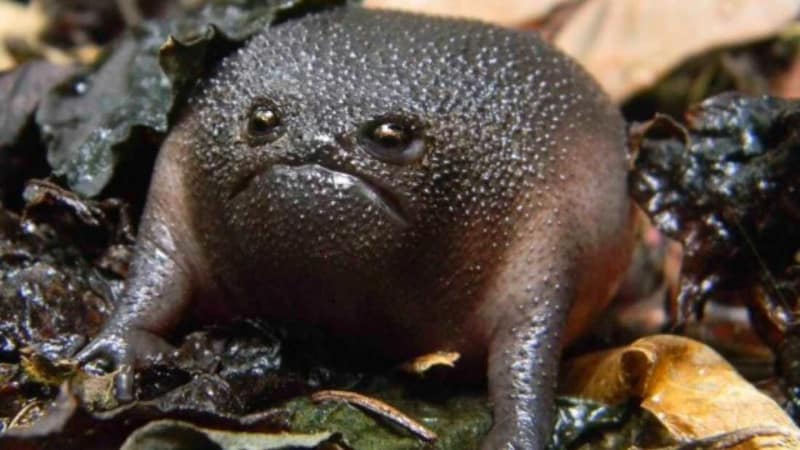Black Rain Frog Facts
- The distinctive term of Black Rain Frog serves as one of the common names for a remarkable variety of amphibian. It also, however, also goes by several other common names. Each of these, in turn, remain comparatively descriptive, though.
- These alternate names for the creature include such terms as the plain rain frog, brown short-headed frog, and the Tsitsikama frog. The scientific name for the amazing animal, meanwhile, is that of the somewhat hard to pronounce Breviceps fuscus.
- The intriguing creation of Nature received that designation due to the efforts of John Hewitt. The respected South African zoologist accomplished the first recognition of it as a separate and distinct species. He achieved that noteworthy feat in the year 1925.
- This fascinating species further remains very well known for several unique physical characteristics. Its ability to puff its body up to several times its normal size easily ranks high among these. It can also, however, fold its legs up under its body at will.
- Quite fortunately, the IUCN currently lists the marvelous Black Rain Frog as a Species of Least Concern. This status appears on the organization’s Red List of Threatened Species. That list is routinely updated, to reflect changing situations.
- The species nonetheless faces various threats to its continued existence, however. One of these consists of its highly limited habitat range. Its greatest threat, though, most likely comes in the form of the effects of ongoing climate change.
Related Articles
Black Rain Frog Physical Description
The truly extraordinary Black Rain Frog immediately draws he eye of those who encounter this wonder of Nature. This occurs due to a variety of factors, of course, depending upon the individual. Nature remains a most resourceful master of surprise and creation.
Regardless of its appearance, this amphibian undeniably remains a relatively small creature. That’s because of the fact that it only averages about 2 in (5 cm) in body length, excluding the legs. Thankfully, though, impressiveness does not depend on sheer size.
The body of the amphibian further develops comparatively squat and compact in terms of overall shape. In addition to this, the legs stay rather short, much like the majority of related species. This also serves to give it a moderately distinctive appearance.
In color, the interesting amphibian also typically develops as a dark brown. This color pattern, in fact, extends almost to the point of appearing black. Uniquely, the skin of the Black rain Frog lacks the warts typical of many frogs, but most commonly presents small tubercles.
- Kingdom: Animalia
- Phylum: Chordata
- Class: Amphibia
- Order: Anura
- Family: Brevicipitidae
- Genus: Breviceps
- Species: B. fuscus
Black Rain Frog Distribution, Habitat, and Ecology
The fascinating Black Rain Frog evolved as native to only a highly limited portion of the surface of the earth. Just how small that zone of habitation qualifies as, and its location, might surprise some people. That’s true since it only lives in a tiny section of Africa.
Perhaps most notably, the remarkable product of evolution appears to only be native to the Cape Fold Mountains, in southern South Africa. Even within that range, however, the marvel of Nature displays very specific preferences for where it makes its home.
This particular amphibian typically inhabits regions of both forests and heathlands on slopes and mountain plateaus. The Breviceps fuscus also resides at altitudes between sea level and 3,280 ft (1,000 m). The remarkable animal also appears to be primarily nocturnal.
This unique species also possesses attributes and behavioral patterns similar to some of its brethren. For one, it evolved as a proficient and frequent burrower. It additionally quite commonly creates tunnels, with these typically being shallow (about 15 cm).
It also distinguishes itself in yet another manner. Quite uniquely, during intercourse, the female excretes a sticky substance to prevent the male from slipping away. After the female lays eggs, the male will typically remain to guard them until hatching occurs.
Species Sharing Its Range
Check out our other articles on 6 Stunning North American Bees, Punaluʻu Beach, Coral Honeysuckle, Humpback Whale, Bloody Hell Pond, East African Lowland Honey Bee, Green Iguana

